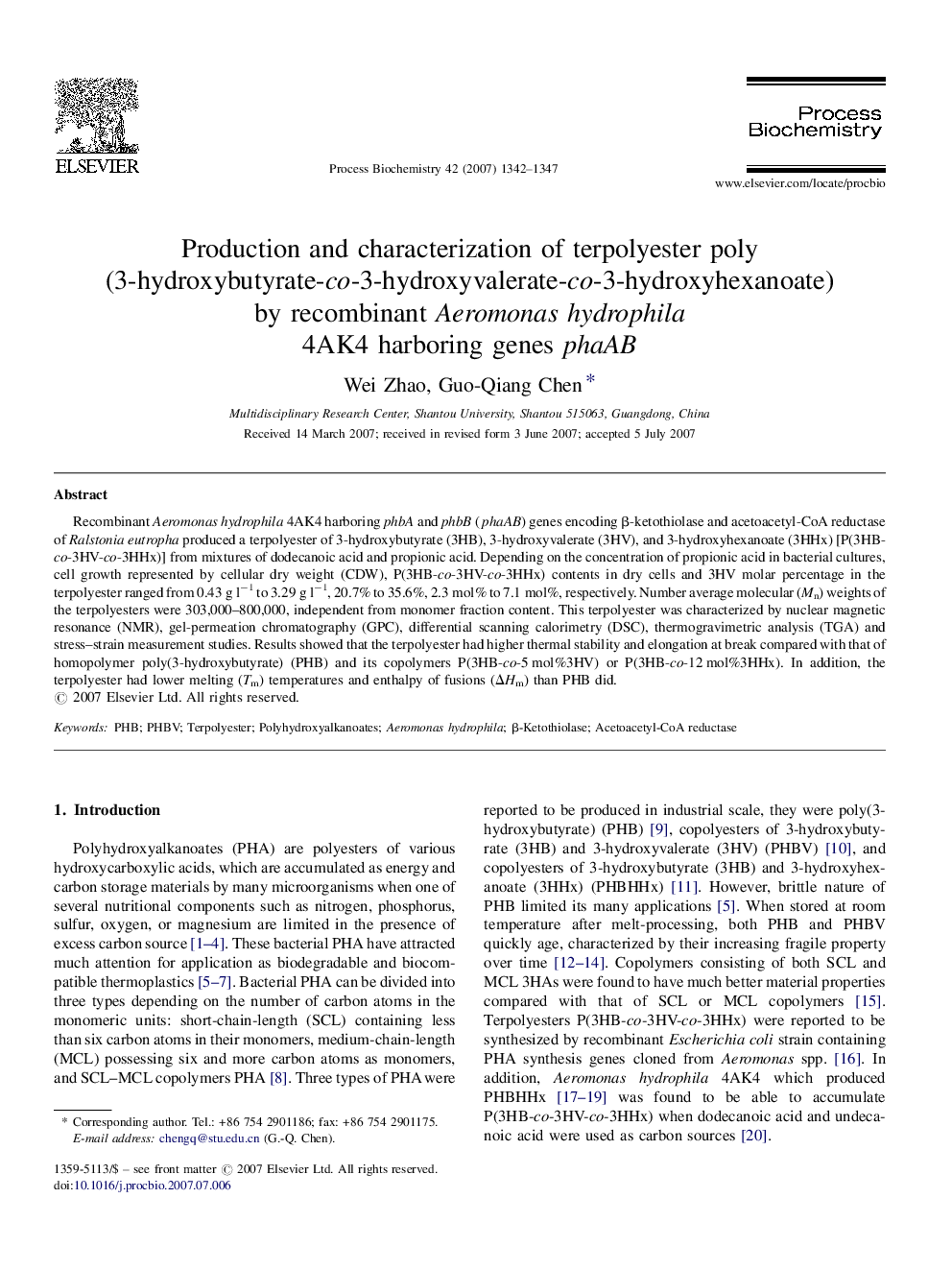| Article ID | Journal | Published Year | Pages | File Type |
|---|---|---|---|---|
| 35704 | Process Biochemistry | 2007 | 6 Pages |
Recombinant Aeromonas hydrophila 4AK4 harboring phbA and phbB (phaAB) genes encoding β-ketothiolase and acetoacetyl-CoA reductase of Ralstonia eutropha produced a terpolyester of 3-hydroxybutyrate (3HB), 3-hydroxyvalerate (3HV), and 3-hydroxyhexanoate (3HHx) [P(3HB-co-3HV-co-3HHx)] from mixtures of dodecanoic acid and propionic acid. Depending on the concentration of propionic acid in bacterial cultures, cell growth represented by cellular dry weight (CDW), P(3HB-co-3HV-co-3HHx) contents in dry cells and 3HV molar percentage in the terpolyester ranged from 0.43 g l−1 to 3.29 g l−1, 20.7% to 35.6%, 2.3 mol% to 7.1 mol%, respectively. Number average molecular (Mn) weights of the terpolyesters were 303,000–800,000, independent from monomer fraction content. This terpolyester was characterized by nuclear magnetic resonance (NMR), gel-permeation chromatography (GPC), differential scanning calorimetry (DSC), thermogravimetric analysis (TGA) and stress–strain measurement studies. Results showed that the terpolyester had higher thermal stability and elongation at break compared with that of homopolymer poly(3-hydroxybutyrate) (PHB) and its copolymers P(3HB-co-5 mol%3HV) or P(3HB-co-12 mol%3HHx). In addition, the terpolyester had lower melting (Tm) temperatures and enthalpy of fusions (ΔHm) than PHB did.
